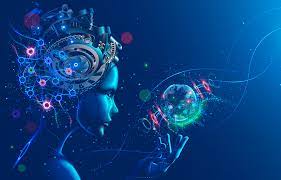Data collection and preprocessing are crucial steps in training and fine-tuning GPT chatbots. Here’s an overview of the process:
- Define the scope: Determine the specific domain or topic for which you want to train the chatbot. This helps in focusing data collection efforts and ensuring that the training data is relevant and useful.
- Collect conversational data: Gather a diverse dataset of conversational examples that cover a wide range of potential user inputs and corresponding bot responses. You can collect data from various sources, such as customer support transcripts, online forums, social media interactions, or by creating synthetic conversations.
- Clean and preprocess the data: Preprocess the collected data to ensure its quality and consistency. This involves steps such as removing duplicates, correcting errors, standardizing formatting, and anonymizing any sensitive or personally identifiable information.
- Format the data: Prepare the data in a format suitable for training the GPT model. Typically, the data is organized as pairs of user inputs and corresponding bot responses. Each pair is treated as a training example.
Example:
User: “What’s the weather like today?”
Bot: “The weather is sunny with a temperature of 75 degrees.”
- Split the dataset: Divide the dataset into training, validation, and testing sets. The training set is used to train the model, the validation set helps in monitoring the model’s performance during training, and the testing set is used to evaluate the final model.
- Tokenization: Tokenize the text data by splitting it into individual tokens, such as words or subwords. Tokenization helps the model process text efficiently and enables better generalization.
- Sequence generation: For training a chatbot, the goal is to generate a response given an input. Create input-target pairs by using the user input as the input sequence and the bot response as the target sequence.
- Special tokens and attention masks: Add special tokens to mark the beginning and end of the sequences, as well as to indicate padding and unknown tokens. Attention masks are used to indicate which tokens the model should pay attention to during training.
- Data augmentation (optional): Augmenting the dataset can help increase its diversity and improve the model’s ability to handle various input scenarios. Augmentation techniques include paraphrasing, adding noise, or introducing variations in the user inputs or bot responses.
- Vocabulary creation: Build a vocabulary or token dictionary based on the preprocessed data. Assign a unique index or ID to each token in the vocabulary, which the model uses to represent the text data during training.
- Data encoding: Convert the tokenized text data into numerical representations that can be fed into the GPT model. This may involve mapping tokens to their corresponding indices in the vocabulary or using techniques like word embeddings.
- Batch generation: Organize the encoded data into batches, which are subsets of the data used for efficient training. Batches allow the model to process multiple examples in parallel, improving training speed and efficiency.
Data collection and preprocessing are crucial steps in training and fine-tuning GPT chatbots to ensure the model learns from high-quality and relevant data. Here’s a general overview of the process:
- Define the Dataset: Determine the type and scope of data you need to collect for training your GPT model. This could include conversational data, question-answer pairs, or any other type of conversation-specific data.
- Gather and Filter the Data: Collect relevant data from various sources, such as chat logs, customer support conversations, or publicly available datasets. Filter out any irrelevant or noisy data to ensure the quality of the training set. You might also need to anonymize or remove any sensitive or personally identifiable information from the dataset.
- Preprocess the Data: Preprocessing involves transforming and organizing the collected data into a format suitable for training the GPT model. This typically includes steps such as tokenization, lowercasing, removing stop words, and handling special characters. Preprocessing ensures that the data is in a standardized format and facilitates efficient training.
- Split the Dataset: Divide the dataset into training, validation, and test sets. The training set is used to train the GPT model, the validation set helps monitor the model’s performance during training, and the test set is used to evaluate the model’s performance after training.
- Formatting for Input and Output: Format the data to feed it into the GPT model. The model generally requires an input sequence, such as a user’s message or question, and an output sequence, which is the expected response. Ensure that the input and output sequences are properly formatted and aligned in the dataset.
- Data Augmentation (Optional): Consider augmenting the dataset to increase its size and diversity. This can involve techniques such as paraphrasing, adding noise, or generating synthetic data. Augmentation can improve the model’s robustness and generalization capabilities.
- Pretraining and Fine-tuning: Once the dataset is prepared, the GPT model goes through two stages: pretraining and fine-tuning. Pretraining involves training the model on a large corpus of non-task-specific text to learn language patterns and semantics. Fine-tuning follows pretraining and involves training the model on the specific conversational dataset.
- Quality Control: Monitor and review the generated responses during the fine-tuning process. Identify and correct any issues, such as overly generic or incorrect responses. Iteratively refine the model’s responses based on user feedback and evaluation metrics.
- Iterative Training: Training a GPT chatbot model is often an iterative process. Train the model multiple times, incorporating user feedback and making adjustments to the dataset or model architecture to improve performance and address any limitations or issues.
Once the data is collected, preprocessed, and prepared, it can be used to train and fine-tune the GPT model for chatbot applications. Training typically involves utilizing techniques like sequence-to-sequence learning, language modeling, and transformer-based architectures to optimize the model’s ability to generate contextually relevant and coherent responses.
